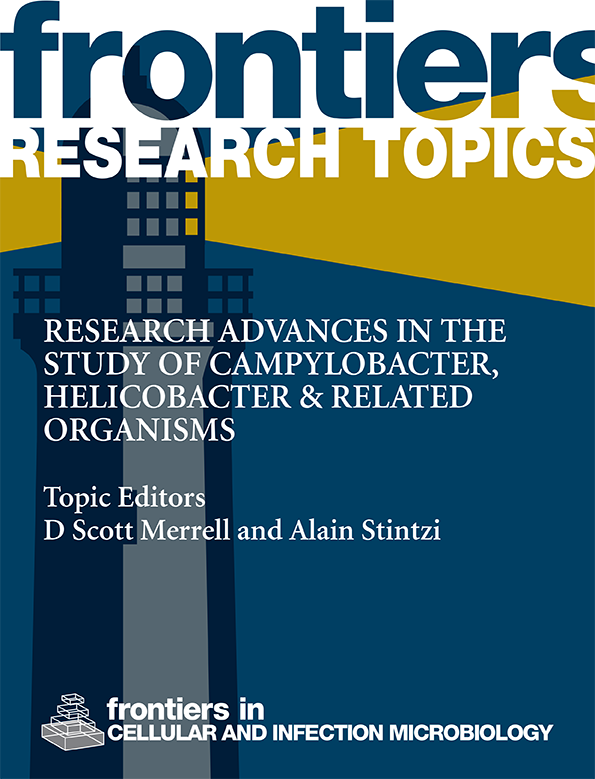Combining network pharmacology, machine learning, molecular docking and molecular dynamic to explore the mechanism of Chufeng Qingpi decoction in treating schistosomiasis
IF 4.6
2区 医学
Q2 IMMUNOLOGY
Frontiers in Cellular and Infection Microbiology
Pub Date : 2024-09-06
DOI:10.3389/fcimb.2024.1453529
引用次数: 0
Abstract
BackgroundAlthough the Chufeng Qingpi Decoction (CQD) has demonstrated clinical effectiveness in the treatment of schistosomiasis, the precise active components and the underlying mechanisms of its therapeutic action remain elusive. To achieve a profound comprehension, we incorporate network pharmacology, bioinformatics analysis, molecular docking, and molecular dynamics simulations as investigative methodologies within our research framework.MethodUtilizing TCMSP and UniProt, we identified formula components and targets. Cytoscape 3.10.0 was used to construct an herb–target interaction network. Genecards, DisGeNET, and OMIM databases were examined for disease-related objectives. A Venn diagram identified the intersection of compound and disease targets. Using Draw Venn, overlapping targets populated STRING for PPI network. CytoNCA identified schistosomiasis treatment targets. GO & KEGG enrichment analysis followed High-scoring genes in PPI were analyzed by LASSO, RF, SVM-RFE. Molecular docking & simulations investigated target-compound interactions.ResultThe component’s target network encompassed 379 nodes, 1629 edges, highlighting compounds such as wogonin, kaempferol, luteolin, and quercetin. Amongst the proteins within the PPI network, PTGS2, TNF, TGFB1, BCL2, TP53, IL10, JUN, MMP2, IL1B, and MYC stood out as the most prevalent entities. GO and KEGG revealed that mainly involved the responses to UV, positive regulation of cell migration and motility. The signal pathways encompassed Pathways in cancer, Lipid and atherosclerosis, Fluid shear stress and atherosclerosis, as well as the AGE-RAGE. Bioinformatics analysis indicated TP53 was the core gene. Ultimately, the molecular docking revealed that wogonin, kaempferol, luteolin, and quercetin each exhibited significant affinity in their respective interactions with TP53. Notably, kaempferol exhibited the lowest binding energy, indicating a highly stable interaction with TP53. Lastly, we validated the stability of the binding interaction between the four small molecules and the TP53 through molecular dynamics simulations. The molecular dynamics simulation further validated the strongest binding between TP53 and kaempferol. In essence, our research groundbreaking in its nature elucidates for the first time the underlying molecular mechanism of CQD in the therapeutic management of schistosomiasis, thereby providing valuable insights and guidance for the treatment of this disease.ConclusionThis study uncovered the efficacious components and underlying molecular mechanisms of the Chufeng Qingpi Decoction in the management of schistosomiasis, thereby offering valuable insights for future fundamental research endeavors.结合网络药理学、机器学习、分子对接和分子动力学探索竹峰青皮煎剂治疗血吸虫病的机理
背景虽然楚风青皮汤(CQD)在治疗血吸虫病方面已显示出临床疗效,但其确切的活性成分及其治疗作用的内在机制仍然难以捉摸。为了深入理解,我们在研究框架内采用了网络药理学、生物信息学分析、分子对接和分子动力学模拟等研究方法。使用 Cytoscape 3.10.0 构建草药-靶标相互作用网络。我们还检查了 Genecards、DisGeNET 和 OMIM 数据库中与疾病相关的目标。维恩图确定了化合物与疾病靶标的交叉点。通过绘制维恩图,重叠的靶标被填充到 PPI 网络的 STRING 中。CytoNCA 确定了血吸虫病治疗目标。采用 LASSO、RF、SVM-RFE 等方法对 PPI 中的高得分基因进行 GO & KEGG 富集分析。结果该成分的靶点网络包括 379 个节点、1629 条边,突出了五加皮苷、山奈酚、木犀草素和槲皮素等化合物。在PPI网络中的蛋白质中,PTGS2、TNF、TGFB1、BCL2、TP53、IL10、JUN、MMP2、IL1B和MYC是最常见的实体。GO和KEGG显示,主要涉及对紫外线的反应、细胞迁移和运动的正向调节。信号通路包括癌症通路、脂质与动脉粥样硬化、流体剪切应力与动脉粥样硬化以及 AGE-RAGE。生物信息学分析表明,TP53 是核心基因。最终,分子对接显示,沃果宁、山奈果醇、木犀草素和槲皮素在各自与 TP53 的相互作用中均表现出显著的亲和力。值得注意的是,山奈酚的结合能最低,表明其与 TP53 的相互作用高度稳定。最后,我们通过分子动力学模拟验证了四种小分子与 TP53 之间结合相互作用的稳定性。分子动力学模拟进一步验证了 TP53 与山奈酚之间最强的结合力。总之,我们的研究具有开创性,首次阐明了清热解毒汤治疗血吸虫病的潜在分子机制,从而为该疾病的治疗提供了有价值的见解和指导。
本文章由计算机程序翻译,如有差异,请以英文原文为准。
求助全文
约1分钟内获得全文
求助全文
来源期刊

Frontiers in Cellular and Infection Microbiology
IMMUNOLOGY-MICROBIOLOGY
CiteScore
7.90
自引率
7.00%
发文量
1817
审稿时长
14 weeks
期刊介绍:
Frontiers in Cellular and Infection Microbiology is a leading specialty journal, publishing rigorously peer-reviewed research across all pathogenic microorganisms and their interaction with their hosts. Chief Editor Yousef Abu Kwaik, University of Louisville is supported by an outstanding Editorial Board of international experts. This multidisciplinary open-access journal is at the forefront of disseminating and communicating scientific knowledge and impactful discoveries to researchers, academics, clinicians and the public worldwide.
Frontiers in Cellular and Infection Microbiology includes research on bacteria, fungi, parasites, viruses, endosymbionts, prions and all microbial pathogens as well as the microbiota and its effect on health and disease in various hosts. The research approaches include molecular microbiology, cellular microbiology, gene regulation, proteomics, signal transduction, pathogenic evolution, genomics, structural biology, and virulence factors as well as model hosts. Areas of research to counteract infectious agents by the host include the host innate and adaptive immune responses as well as metabolic restrictions to various pathogenic microorganisms, vaccine design and development against various pathogenic microorganisms, and the mechanisms of antibiotic resistance and its countermeasures.
文献相关原料
| 公司名称 | 产品信息 | 采购帮参考价格 |
|---|
 求助内容:
求助内容: 应助结果提醒方式:
应助结果提醒方式:


